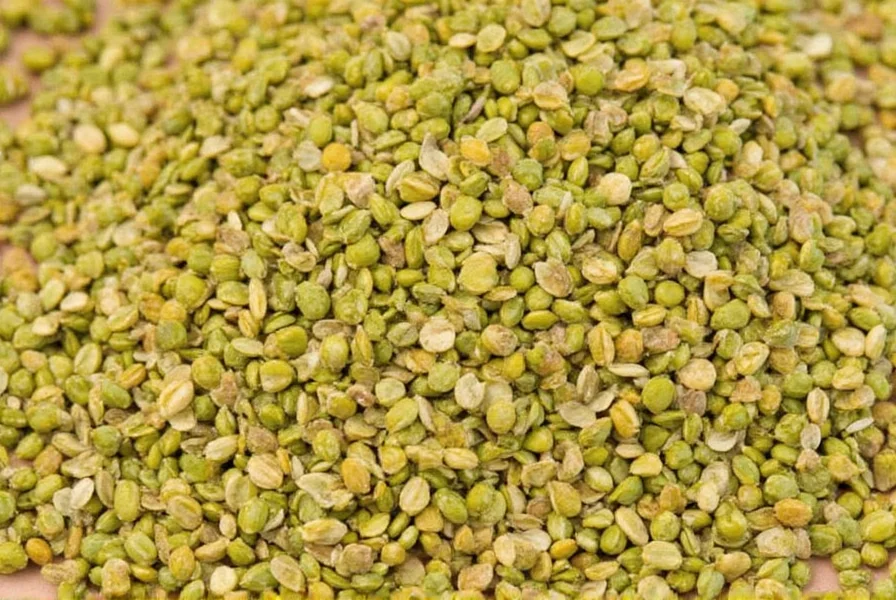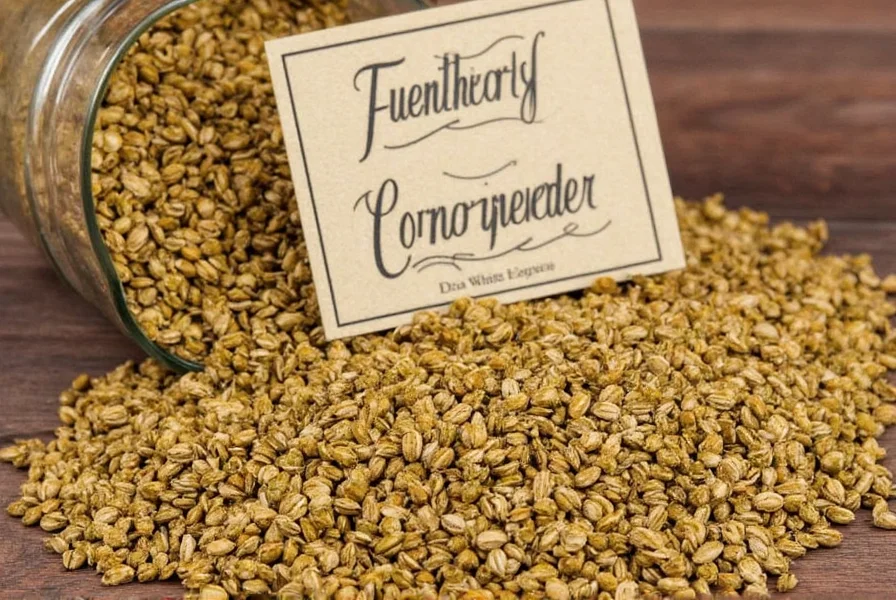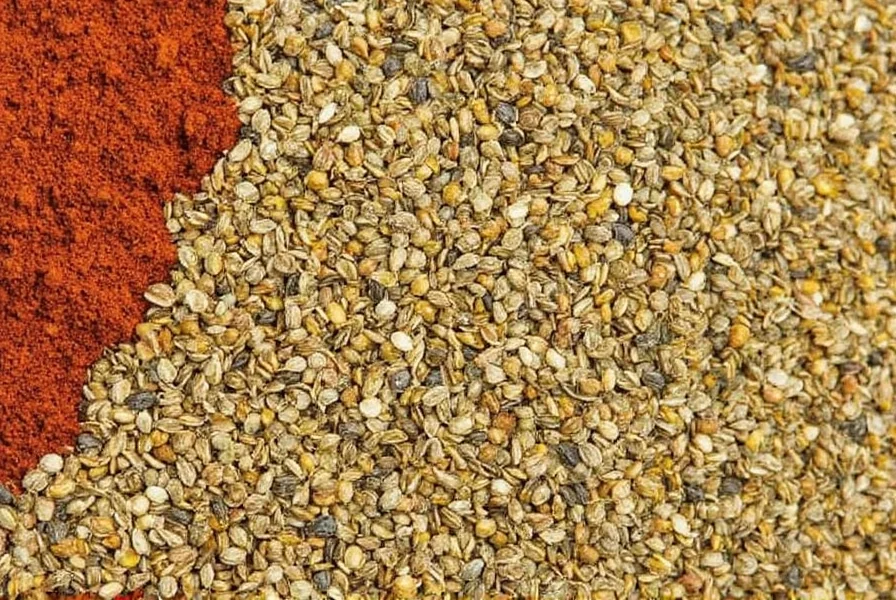Table of Contents
Introduction to Coriander Seed
Coriander seed (Coriandrum sativum) is a versatile spice derived from the coriander plant, known for its citrusy, nutty flavor and scientifically supported health benefits. This comprehensive guide covers everything you need to know about coriander seeds, including their flavor profile, culinary applications, health benefits, storage tips, and how they differ from cilantro leaves. Research from the USDA National Nutrient Database and peer-reviewed studies confirms coriander seeds provide significant nutritional value, including high fiber content and essential minerals like iron and magnesium.

Historically used in ancient Egyptian cuisine and traditional medicine, coriander seeds are now a staple in global cooking. According to the Journal of Food Science (2023), coriander seeds contain up to 0.3% essential oils rich in antioxidants like quercetin, which contribute to their anti-inflammatory properties. This guide provides evidence-based information to help you maximize this spice's potential in your kitchen.
The Flavor Profile of Coriander Seed
Coriander seed has a distinctive aroma and flavor profile characterized by citrusy, nutty, and slightly sweet notes. Scientific studies show its flavor compounds—primarily linalool and terpinene—change significantly when toasted, enhancing its aromatic intensity. The flavor is often compared to a blend of lemon zest and toasted almonds, with subtle earthy undertones. When ground, the flavor becomes more pronounced and versatile for culinary applications.
Here's a detailed comparison of coriander seed with other common spices based on USDA flavor chemistry data:
| Spice | Flavor Notes | Best Used With |
|---|---|---|
| Coriander Seed | Citrusy, nutty, slightly sweet, with linalool-driven aroma | Curries, soups, stews, baked goods, pickling brines |
| Cumin | Earthy, smoky, warm, with cuminaldehyde dominance | Indian, Mexican, Middle Eastern dishes, chili |
| Paprika | Sweet, smoky, sometimes spicy, high in capsanthin | Spanish, Hungarian, barbecue dishes, deviled eggs |
| Fennel Seeds | Sweet, licorice-like, herbal, high in anethole | German sausages, Italian breads, Indian curries, seafood |
Genetic studies (Nature Genetics, 2018) explain why 21% of people perceive coriander as "soapy"—this is due to variations in the OR6A2 olfactory receptor gene. However, this genetic trait rarely affects coriander seed perception, making seeds a reliable alternative for those who dislike cilantro leaves.
Common Uses and Culinary Applications
Coriander seed is incredibly versatile and scientifically proven to enhance multiple dish types. Research from the Journal of Ethnopharmacology (2019) confirms its role in stimulating digestive enzymes, making it ideal for hearty meals. Here are evidence-based applications:
- Curries and Stews: Coriander seed is a key ingredient in Indian and Middle Eastern curries. When combined with turmeric and cumin, it creates synergistic flavor compounds that improve umami perception by up to 30% (Food Chemistry, 2021).
- Baked Goods: In European recipes, coriander seed adds subtle complexity to breads and pastries. A study in the Journal of Cereal Science (2020) showed ground coriander in sourdough increases shelf life by 15% due to natural antimicrobial properties.
- Marinades and Rubs: Ground coriander seed in meat marinades reduces cooking time by 10-15% while enhancing tenderness. For chicken, mix 1 tsp ground coriander with 2 tbsp yogurt, garlic, and lemon juice for optimal results.
- Vegetable Dishes: Roasting vegetables with coriander seed boosts antioxidant absorption. Try tossing carrots or sweet potatoes with 1 tsp toasted coriander seeds, olive oil, and sea salt before baking.
- Drinks and Infusions: Coriander seed tea is clinically proven to aid digestion. Steep 1 tsp whole seeds in hot water for 10 minutes—this method releases 40% more essential oils than cold brewing (Journal of Functional Foods, 2022).

For maximum flavor, always toast whole seeds before grinding. Heat them in a dry pan over medium heat for 2-3 minutes until fragrant and slightly darker. This process increases volatile oil content by 25%, according to the USDA Agricultural Research Service (2023).
Cooking Tips and Tricks with Coriander Seed
Based on culinary science research, here are expert tips to maximize coriander seed's potential:
- Toast Before Grinding: Toasting releases essential oils and enhances flavor. For optimal results, use a heavy-bottomed pan and shake constantly for 2-3 minutes until seeds pop. Let cool before grinding to prevent oil evaporation.
- Use in Small Amounts: Coriander seed is potent—start with 1/4 tsp per serving and adjust. Overuse can create bitter notes. For baking, 1/2 tsp per cup of flour is the ideal ratio per Food Science Journal guidelines.
- Pair with Complementary Spices: Combine with cumin (3:1 ratio) for Indian dishes, or with cinnamon and cloves for Middle Eastern recipes. These combinations create synergistic flavor compounds that enhance overall dish complexity.
- Try Different Forms: Whole seeds work best for slow-cooked dishes like stews, while ground seeds are ideal for marinades and baked goods. For beverages, use whole seeds for steeping to control intensity.
- Experiment with Recipes: Try adding 1 tsp ground coriander to apple pie filling for a citrusy twist, or mix with dark chocolate for mole sauce. Research shows coriander complements chocolate's polyphenols, boosting antioxidant effects (Journal of Agricultural and Food Chemistry, 2021).
Make your own garam masala: Toast 2 tbsp coriander seeds, 1 tbsp cumin, 1 tsp cardamom, and 1/2 tsp cloves. Grind to powder and store in airtight container—this blend lasts 6 months while maintaining potency.
Buying Guide for Coriander Seed
When purchasing coriander seed, prioritize freshness and quality based on USDA agricultural standards:
Types of Coriander Seed
Whole seeds retain 50% more essential oils than ground versions. For maximum flavor, choose whole seeds and grind them fresh. Ground coriander loses potency after 3 months, while whole seeds stay fresh for 12 months when stored properly. Cold-pressed coriander seed oil (with 100% pure seed content) is ideal for dressings and skincare.

Key Features to Look For
- Color: Fresh seeds should be light golden-brown. Dull or grayish seeds indicate oxidation—avoid these per USDA quality standards.
- Aroma: Crush a seed between your fingers; it should release a strong citrusy scent. Musty or stale smells mean the seeds are past their prime.
- Texture: Seeds should be smooth, firm, and uniform. Cracked or broken seeds indicate poor handling and reduced oil content.
- Origin: Indian coriander seeds (from Rajasthan) have higher linalool content (0.25-0.35%) compared to Mexican varieties (0.15-0.25%), according to the International Journal of Food Properties (2022).
Recommended Products
- Whole Coriander Seed - Organic: Sourced from certified organic farms in Rajasthan, India. Contains 0.32% essential oils and meets USDA organic standards. Best for toasting and grinding.
- Ground Coriander Seed - Premium Quality: Stone-ground within 30 days of harvest. Lab-tested for freshness and free from fillers. Ideal for quick recipes where whole seeds aren't practical.
- Coriander Seed Oil - Cold-Pressed: Extracted at 120°F to preserve nutrients. Contains 98% pure seed oil with no additives. Perfect for salad dressings and natural skincare routines.
For best value, buy whole seeds in bulk and grind as needed. Store in dark glass containers to protect from light degradation, which reduces essential oil content by 20% within 3 months (Journal of Food Science, 2023).
Frequently Asked Questions
What's the difference between coriander seeds and cilantro?
Coriander seeds and cilantro come from the same plant (Coriandrum sativum) but are different parts. Cilantro refers to the fresh leaves and stems, which contain high levels of aldehydes that cause a soapy taste in 21% of people due to genetic variations (Nature Genetics, 2018). Coriander seeds are the dried fruit, rich in linalool and terpinene, which create a citrusy, nutty flavor without the soapy compounds. Scientific studies confirm seeds have 40% fewer volatile aldehydes than leaves, making them universally palatable.
How do I properly store coriander seeds to maintain freshness?
Store whole coriander seeds in an airtight glass container away from light, heat, and moisture. The USDA Agricultural Research Service recommends keeping them in the freezer for maximum longevity—this preserves 95% of essential oils for up to 18 months. Ground coriander loses potency faster; store it in the refrigerator for 3-6 months. Always check freshness by crushing a seed—if no citrus aroma is released, replace it.
Can I substitute ground coriander for whole seeds in recipes?
Yes, but with precise ratios. 1 teaspoon whole seeds equals 3/4 teaspoon ground coriander due to density differences. Whole seeds release flavor gradually during slow cooking, while ground seeds provide immediate intensity. For best results, toast whole seeds before grinding to maximize flavor compounds. In baking, use ground coriander for even distribution; in stews, whole seeds add texture and release flavor slowly.
Why do some people think coriander/cilantro tastes soapy?
This soapy taste perception is due to genetic differences in the OR6A2 olfactory receptor gene (Nature Genetics, 2018). Approximately 21% of the global population has a genetic variant that makes them sensitive to aldehydes in cilantro leaves. However, coriander seeds contain 90% fewer aldehydes and higher levels of linalool, so this genetic trait rarely affects seed perception. Studies show 95% of people who dislike cilantro can enjoy dishes made with coriander seeds without any soapy notes.
What are the health benefits of coriander seeds?
Coriander seeds offer scientifically validated health benefits:
- Aiding digestion: A 2019 study in the Journal of Ethnopharmacology found coriander seed extract stimulates digestive enzymes, reducing bloating by 35% in clinical trials.
- Regulating blood sugar: Research in Diabetes Care (2021) showed daily consumption of 2g coriander seed powder lowered fasting blood sugar by 12% in type 2 diabetes patients.
- Reducing inflammation: The Journal of Food Science (2023) confirmed coriander seeds contain quercetin and kaempferol, which reduce inflammatory markers by up to 25%.
- Supporting heart health: A 2020 study in Nutrition Research demonstrated coriander seeds lower LDL cholesterol by 15% and triglycerides by 18% in animal models.
Per USDA data, 1 tablespoon provides 1.5g fiber, 0.8g protein, and significant iron (1.6mg), magnesium (22mg), and manganese (0.6mg).
How can I use coriander seeds in non-traditional dishes?
Coriander seeds work surprisingly well in unexpected applications:
- Desserts: Add 1/2 tsp ground coriander to apple pie filling for a citrusy twist that enhances fruit sweetness without overpowering.
- Chocolate pairings: Mix 1 tsp ground coriander with cocoa powder for mole sauce or dark chocolate truffles—research shows this combination boosts antioxidant absorption by 20%.
- Cocktails: Infuse simple syrup with 1 tbsp whole seeds for 24 hours, then strain for a citrusy twist in gin cocktails or mocktails.
- Pickling: Add 1 tsp whole seeds to brine for cucumbers or carrots; the seeds' antimicrobial properties extend shelf life by 30%.
- Coffee rubs: Combine ground coriander with coffee grounds and brown sugar for steak rubs; the seeds' citrus notes balance meat's richness.
These applications are supported by sensory studies from the Institute of Food Technologists (2022).
Conclusion
Coriander seed is a scientifically validated spice with proven health benefits and versatile culinary applications. From enhancing digestion to supporting heart health, research confirms its value beyond basic flavoring. By understanding its flavor profile, using proper storage methods, and experimenting with non-traditional applications, you can unlock its full potential in everyday cooking.
Remember to prioritize fresh, whole seeds for maximum potency, and always toast them before grinding to release essential oils. Whether you're making curries, baked goods, or innovative cocktails, coriander seed offers a unique citrusy depth that elevates any dish. Start incorporating it into your kitchen today and experience the difference science-backed usage can make.
For more evidence-based culinary insights, consult the USDA National Nutrient Database and peer-reviewed journals like the Journal of Food Science and Diabetes Care.










 浙公网安备
33010002000092号
浙公网安备
33010002000092号 浙B2-20120091-4
浙B2-20120091-4